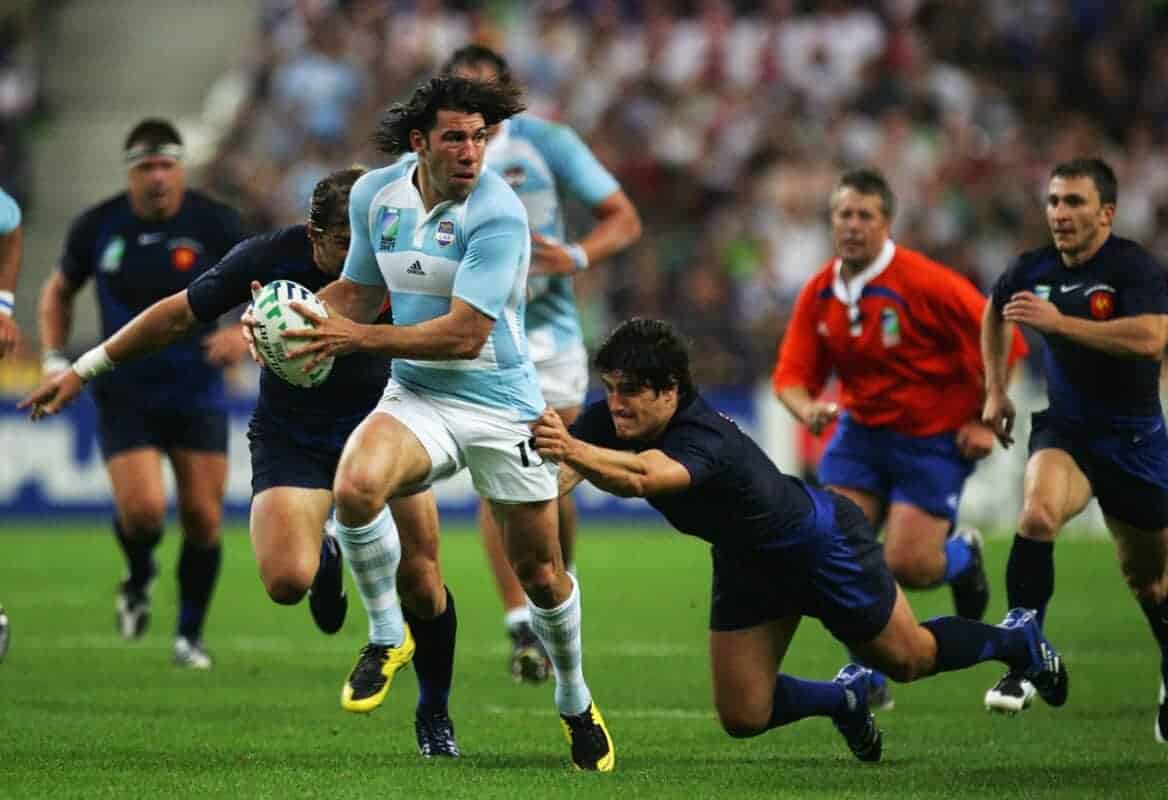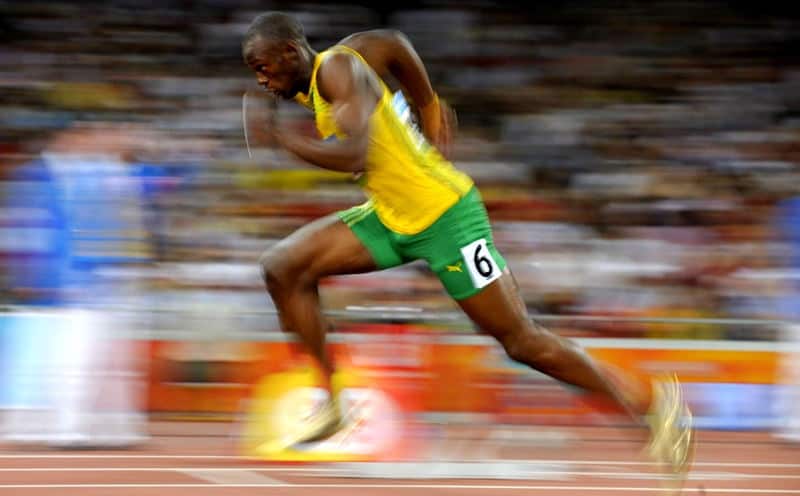Strength training or resistance training in English, is one of the fundamental elements that should be included in any training program. Although its use is well established, very few times do coaches and physical trainers use correct terminology.
This lack of knowledge about the science of strength training often leads to incorrect strength training that can interfere with or alter the adaptation processes in the athlete or even cause a decrease in their performance.
In the first part of this article, we will address the following objectives:
- Define strength in sports from a mechanical and physiological point of view
- Define the concept of strength in sports.
- Identify, differentiate, and apply to specific cases the concepts of maximum strength, RFD (explosive strength, in training jargon), and useful strength.
- Explain the relationship between maximum strength and RFD with time, load, and movement speed.
- Interpret the force-time-speed-power relationships (curves).
Concept of strength in sports
Strength in sports, from the point of view of mechanics, is any cause capable of modifying the state of rest or motion of a body. González-Badillo and Ribas (1) define it as the measure of the result of the interaction of two bodies. In mechanics, strength in sports is basically defined as the product of a mass by an acceleration (F= m . a) and its unit of measurement is the Newton.
González-Badillo and Ribas (1) add that in the sense in which strength is defined in mechanics, muscular strength, as a cause, would be the capacity of the musculature to deform a body or to modify its acceleration: to start or stop the movement of a body, increase or reduce its speed, or change its direction.
From a physiological point of view, strength in sports is understood as the muscle’s ability to produce tension when activated. According to González-Badillo and Ribas (1), this ability is related to a series of factors, such as:
- The number of myosin cross-bridges that can interact with actin filaments.
- The number of sarcomeres in parallel.
- The specific tension or strength that a muscle fiber can exert per unit of cross-sectional area.
- The length of the fiber and the muscle
Strength in sports
When we talk about strength, we must always establish two sources:
- Internal strength: generated by the muscle.
- External strength: generated by the weight to be overcome, the resistance to displacement, and the movement of bodies.
From the interaction between internal and external strength arises the applied strength or strength in sports (1). According to these authors, strength in sports is the applied strength, which is nothing more than the external manifestation of the internal tension generated in the muscle. The applied strength will always depend on time and speed.
We must know that the more time the athlete has to apply strength, the more strength they can apply. However, as their performance and sports level increase, the time they have available to apply strength will be less, so the speed at which they must apply this strength will have to increase as their performance improves.
Finally, the strength in sports at the time and speed we have available in competition to execute the technical gesture is called useful strength (1).
RFD and maximum RFD
Linking with the previous section, if as we increase our performance we have less time to apply strength, our main objective to achieve with strength training in any sport will be for our athlete to be able to produce the maximum strength possible in the shortest time possible.
To achieve this maximum production of strength per unit of time (maximum RFD) during strength training, two conditions must be met (1).
- That our athlete has the will to apply the maximum strength in sports as quickly as possible.
- That the load being worked with is greater than 30% of the maximum isometric strength.
This means that with loads below 30% of the MIS, even if we have the will to apply the maximum strength as quickly as possible, we will never reach the maximum RFD. However, not being able to reach the maximum RFD with a light load does not mean that we are not training it.
In fact, as we will see in later articles, in most cases we will have to train with light loads, close to those of competition, and try to apply the maximum strength possible in the shortest time possible.
Force-time curves; force-speed and power
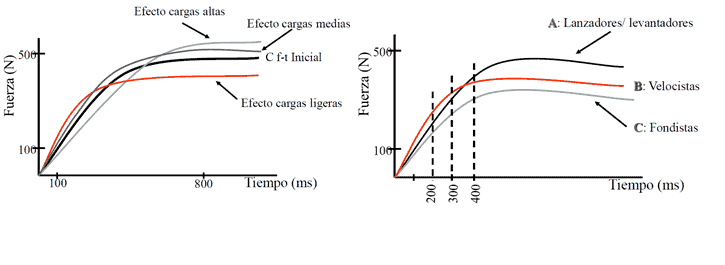
As we can see, depending on the load we train with, the effect will be different. Depending on the sport we practice and its strength needs in sports, the loads we work with may vary. However, in most sports, we should work most of the time with medium or low loads.
As we can see, although throwers or weightlifters are the ones who reach higher strength values, in short-duration actions, sprinters are the ones who can apply more strength in the same time.
As we said earlier, our goal with strength training will always be for our athlete to be able to apply the greatest strength in sports in the shortest time possible, so it will not be enough for them to be able to apply a lot of strength over long periods if then in the reduced time they have to apply strength in a competition, they are not able to apply the maximum strength possible.
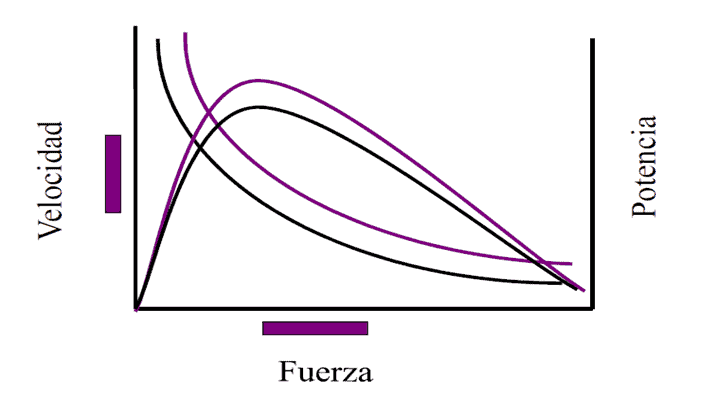
In figure 2, we can see how power will always depend on strength and speed (P= F * V), so as we will see in other articles, it makes no sense to say that in a microcycle or mesocycle we are going to work on maximum strength and in another on power, or that in one we are going to work on explosive strength (maximum RFD) and in another on power.
It would also make no sense to say that power training is different from strength training. Whenever we want to improve power, we will have to be able to apply more strength in the same time or apply the same strength in less time, or in other words, manage to move with strength training the same load (kg) or our own body, at a higher speed.
In short, we will never be able to improve power if we do not improve our maximum strength or RFD/maximum RFD, and whenever we perform work with the aim of improving maximum strength or RFD/maximum RFD, we will also be working and improving power and vice versa.
In figure 3, we can see how depending on the loads we train with, we will obtain different force-speed and power curves.
In curve 1, the ideal training effect that we should achieve in the majority of sports is reflected. As we can see, there is a greater improvement in strength in sports and power at high speeds and low loads, that is, this athlete would have been able with training to apply more strength to low loads (competition load) in less time (high speeds).
On the contrary, the subject of curve 2 has obtained a greater improvement in strength in sports and power at lower speeds and higher loads. Probably the only sport in which this improvement might be of interest is weightlifting, where there is no time limit to apply strength and move a load. Although we will see later that this is not entirely true.
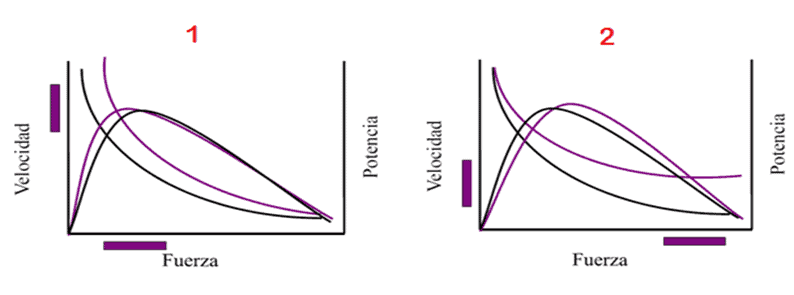
Finally, as a summary, I present an image by González-Badillo & Ribas (1) in which they schematically depict the only types of strength we can work on with training:
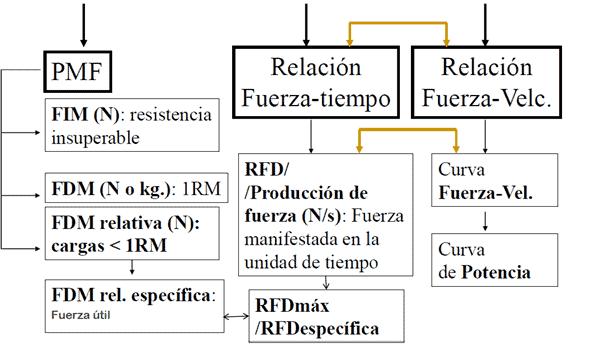
Next, we will analyze what intensities and training volumes we will have to use when working on strength in sports with our athletes to achieve the maximum improvement in maximum strength and maximum RFD.
Next, we will:
- Define the concept of training load.
- Explain the relationships between the proposed load and the real load and their applications to training.
- Define the concept of effort character
- Explain how to program and quantify training through volume and intensity.
The strength training load in sports
González-Badillo & Ribas (1) define the load as the set of biological and psychological demands caused by training activities. The set of stimuli expressed in the form of training that athletes face is called proposed or external load, and the set of biological and psychological demands caused by these training stimuli is called real or internal load.
The real or internal load is the load that we will always have to program, to then design the training stimuli that we believe will help achieve it. In most cases, it is done the other way around, a series of training stimuli (exercises, % 1RM, repetitions, sets, rests, etc.) are programmed without really knowing the effect this will have on our athlete and their performance.
Therefore, the objective of the coach and the physical trainer will be:
- Define the load precisely and exhaustively
- Control and analyze the relationship between the real load and the proposed load and between both and performance.
- Use models for measuring and quantifying loads.
Components of the load: Volume
Volume refers to the total amount of work done in a training session, in a week, in a complete cycle, in a season, etc. The best way to express volume is through the number of repetitions performed, as this is directly related to the time under tension or duration of the stimulus (2).
However, according to Sánchez-Medina & González-Badillo (3), volume alone is an insufficient data to program and evaluate training, so it must be associated with the other components of the load, especially intensity, type of exercise, and execution speed.
In this sense, González-Badillo & Ribas (1) establish that the training volume will only be important when the programmed intensity is adequate. Therefore, we will analyze in detail the appropriate intensity for strength training and we will be able to easily understand its close relationship with training volume.
Components of the load: Intensity
If right now each of the coaches or physical trainers were asked to establish the different ways in which intensity can be expressed and quantified, most would perhaps say; through the load (kg), number of repetitions or sets, % 1RM.
Some would add power, and very few the speed at which we move a load. However, probably none or almost none would mention the character of the effort.
González-Badillo & Gorostiaga (4) (5) define the character of the effort as the relationship between the degree of training demand and the current/real possibilities of the subject at a given time. González-Badillo & Ribas (1) define effort as the degree of physiological, mechanical, technical, and emotional demand or requirement of the organism (real load) in each unit of action, and add that intensity is the degree of effort required to perform an exercise or training activity.
Therefore, according to these authors, the character of the effort is or expresses the intensity itself, that is, it defines it, and is determined by the relationship between what is done and what is achievable.
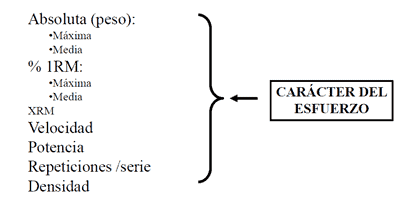
We will call absolute intensity the load or weight (kg) that we will use in each exercise and relative intensity the %1RM that this load or weight represents for our athlete. Finally, we will establish the number of sets and repetitions. However, if we only stop there, we will be making a serious mistake in programming our strength training in sports.
González-Badillo & Ribas (1) establish in a table the number of repetitions that a subject could perform for each % of 1RM:
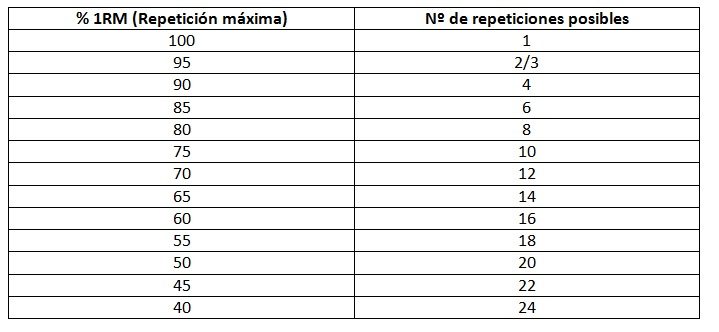
However, these authors add that although most athletes will be able to perform a number of reps/set very close to the number of repetitions indicated above for each percentage, some clarifications should be made:
- The greater the amount of muscle mass involved in performing an exercise, the more repetitions per set can be performed with a certain percentage of 1RM.
- In exercises of complex technique (such as Olympic weightlifting exercises), it is likely that the possible number of repetitions will be lower, due to the demand for precision combined with high speed.
- In machine exercises, the number of repetitions per set is greater than when working with free weights.
- The higher the percentage of fast fibers present in a subject’s musculature, the fewer repetitions per set can be performed.
- If the type of strength training in sports usually performed by an athlete is based on many repetitions per set, it is likely that the number of repetitions per set with each percentage of 1RM will also be greater.
- If the percentage of 1RM is the only reference used to quantify the training dose, there is an easy risk of training two subjects with very different real loads despite the relative intensity being the same.
Therefore, it will be essential to also analyze at all times that the number of programmed repetitions fits the intensity and the character of the effort we wanted to work on.
This idea shows the importance of programming our training based on the relationship between the number of repetitions performed and the achievable ones (character of the effort). At the same time, it is another warning about the drawbacks that the use of the percentage of 1RM as the only reference to express and dose the intensity of training can have.
The character of the effort (CE) as an expression of intensity
When we program a training session, the programmed relative intensity will not be as important as the number of repetitions we do with that load (character of the effort). The generalized belief is that to improve maximum strength, the best—and even necessary—is to use a maximum CE (although this term is not used), however, practice and studies on the subject indicate that maximum CE is very rarely useful and necessary.
For more than 20 years, many authors have demonstrated through their studies that performing the maximum number of possible repetitions with a certain load (reaching failure) does not produce greater improvements than working with a lower character of effort (6,7,8). In the same sense, other authors express themselves when they conclude that repetitions with maximum CE have negative effects on performance if used very frequently (1,9).
Carpinelli (10) provides in his review a list of studies that support with their results that the concept “heavier-is-better” is the best option for improving strength in sports, but that nevertheless have applied incorrect procedures to reach these conclusions, or have formulated them without any scientific justification (Atha, 1981; Berger, 1982; Kraemer, 1983 and 2002; Fleck & Kraemer, 1988, 1996 and 1997; Holfman, 2002; Kraemer & Ratamess 2004; Kraemer et al., 2007; Brown et al. 2007 and so on up to a total of 40 investigations).
On the other hand, Carpinelli (10) also provides those studies that, using a correct procedure, have demonstrated that higher intensities (%1RM) do not produce greater improvements in strength in sports than other protocols of lower intensities.
Despite all this, many recognized authors and international institutions (American College of Sports Medicine (ACSM), National Strength and Conditioning Association (NSCA)…) continue to promulgate this way of working.
As Izquierdo and GonzálezBadillo (11) affirm, the recommendations made by these institutions and authors are usually too intense and fatiguing, potentially inducing an increased risk of injury and overtraining, in addition to not favoring to a greater extent the development of strength in sports and muscle mass than the effects that could arise from using lower intensities.
According to González-Badillo & Ribas (1), sets with maximum CE are not necessary in most sports. They add that if they are used, which would be useful in very few specialties, the repetitions per set should not be more than 3, and they should be done very infrequently.
As we can see and as we said earlier, volume (total number of repetitions) will always depend on and be related to intensity (number of repetitions performed in relation to the achievable ones). We find in the literature a multitude of studies that have analyzed the problem of optimal volumes and intensities for strength training in sports without being able to conclude that higher volumes and training intensities will always produce greater improvements.
Izquierdo-Gabarren et al. (12) conducted a study with young rowers. Four groups were made, one group trained with 4 exercises with sets to failure (4RF), another trained the same exercises but only did half of the possible repetitions (4NRF), and a third group only performed 2 exercises (2NRF) doing half of the achievable repetitions. The last one did not train any strength in sports (C).
All did the same endurance work typical of their sport, the only difference was the strength training which consisted of the same sets for each exercise but with different repetitions.
At the start of the training, there were no differences between groups, but after 8 weeks, only the group that had done 4 exercises without reaching failure significantly improved their strength in sports, and in endurance, the two groups that did not train to failure improved.
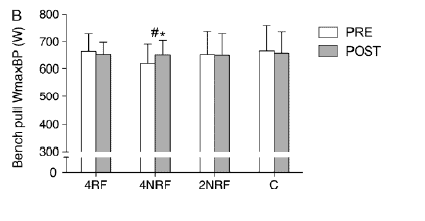
González-Badillo et al. (11) conducted a study with junior weightlifters with more than 3 years of experience and divided the subjects into 3 groups of low, medium, and high volume of repetitions. They trained for 10 weeks, 4-5 days a week, the same exercises and the same volume (total number of repetitions) at intensities between 60-90%RM, but different total number of repetitions between 90 and 100% RM. From 90% RM, each group did a low, medium, or high volume of repetitions compared to the total they could perform.
At the end of the training period, the medium volume group (medium CE) was the one that obtained greater strength gains in sports, while in the groups that trained with high volumes (performed all or almost all possible repetitions – maximum CE) and low (performed very few repetitions compared to what they could do – low CE) no differences were found compared to the initial tests. In addition, the high-volume group was unable to complete all the repetitions programmed for their training.
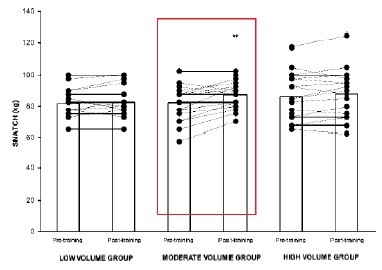
González-Badillo et al. (13) in a very similar study divided the lifters into the same 3 groups of low, moderate, and high volume. All groups trained at the same intensity and the same number of days a week, only differing in the number of repetitions (character of the effort).
Considering as 100% the number of repetitions made by the high-volume group, the medium group did 82% and the low group did 63% of the repetitions made by the first group.
Their authors concluded that training with a moderate volume of repetitions compared to the total that could be done (medium CE) was more effective and efficient for improving strength in sports in highly trained athletes than training to failure (maximum CE) or with a low volume of repetitions (low CE).
Izquierdo et al. (14) conducted a study with fairly trained basketball players (alternative sport). The subjects were divided into 3 groups: one trained strength to failure (RF), another never reached failure (NRF), and a third did not train strength in sports (C). All did the same exercises, at the same intensity, and 2 days a week.
At the end of the study, they concluded that training to failure (maximum CE) improved the ability to resist strength in sports but that both trainings were equally valid for improving strength in sports and power.
As we can see in Figure 4, the group that did not train to failure (NRF – medium CE) managed to increase their RM (kg) as much as the group that trained to failure (RF).
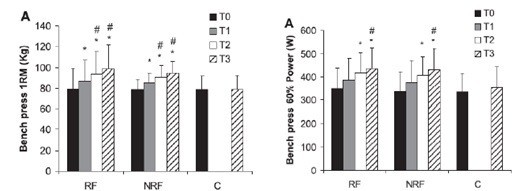
González Badillo et al. (15) analyzed the effect of strength training in sports at maximum speed, moderate load, and few repetitions on performance in CMJ, 20m Sprint, and maximum aerobic speed in young soccer players.
Two groups performed the strength program while another group did not during the 26 weeks the study lasted. The groups of soccer players who performed the strength program in sports improved in all tests more than the group that did not train strength.
Finally, highlight a recent meta-analysis by Soriano, M.M., et al. (16) in which these authors have analyzed a multitude of studies with the aim of establishing the optimal load for improving performance in jump exercises (CMJ), squats, deadlifts, and cleans.
After that, they concluded that the optimal loads for these exercises would be: CMJ (>30% 1RM), squats (30-70% 1RM), and deadlift-clean (>70%RM). As we can see, for two exercises as common in strength training in sports as the CMJ and squats, loads should never exceed 30 and 70% respectively.
To conclude, we would have to see the speed of displacement of the training load (kg), which is closely related to the character of the effort we have discussed earlier and which seems to be, to this day, the most accurate and correct way to program and quantify the intensity of any strength training in sports. However, we will leave all this for the next article.
Importance of execution speed
Next, we will:
- Analyze the importance of execution speed in the quantification and programming of training.
- Analyze the relationship between execution speed, speed loss, and character of the effort.
- Explain how to program our training based on execution speed.
Speed is a variable that directly depends on strength. The greater the strength in sports we apply to the same load, the greater the speed at which we can move it.
As sports performance increases, the time our athlete will have to apply strength will be less, so we will have to be able to achieve with our training that they are able to apply the maximum strength at the maximum possible speed.
Speed also helps define another indicator of intensity, power (power = strength x speed). The greater the execution speed, the greater the power developed. Therefore, we could never improve our power if we do not try to apply the maximum speed in each action or repetition.
González-Badillo (1), in his book on weightlifting, already said:
- “If we could measure the maximum speed of movements every day and with immediate information, this would possibly be the best point of reference to know if the weight is adequate or not.”
- “A determined decrease in speed is a valid indicator to stop training or lower the weight of the bar.”
- “We could also have recorded the maximum speed reached by each lifter with each percentage, and based on this, assess the effort.”
Izquierdo, M., and colleagues (2) analyzed the speed loss at different relative intensities (% 1RM) in the bench press and squat exercises. Their main finding was that for each exercise, the speed loss at each relative intensity (%1RM) was the same in all subjects.
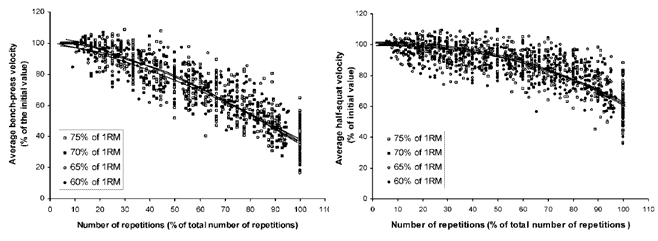
Sánchez-Medina and González-Badillo (3) analyzed the importance of speed for quantifying training intensity in the bench press exercise in 120 subjects.
They found something very similar to the previous study, there was a very close relationship between the load (%1RM) and the average propulsive speed at which it was moved.


González-Badillo already in the year 2000 in an article for the Infocoes magazine of the COE (4), established the following table that years later, as we have seen earlier, has been used for the development of numerous scientific works.

Applications for training
- The speed at which maximum power is reached is very similar in all exercises, around 1m/s.
- Maximum power, however, depending on the exercise, is reached at a different % of 1RM.
- For each exercise, each %1RM and the RM are reached at a different speed.
All these data provide us with valuable information to carry out better programming and quantification of our training. Our goal is always to apply the maximum strength possible in the shortest time possible (maximum speed).
In most sports, we will always have to try to improve the maximum RFD, and consequently, the Maximum Power. With these data, we know that to improve all this, we will have to work with relative intensities (%1RM) and absolute (kg) that we can move around 1m/s.
Some of you may think, “And if I don’t have an instrument to measure speed?” For that, González-Badillo also provides us with the %1RM at which maximum power is reached for each of those exercises.
What is the main problem? Although these 4 exercises may be the most fundamental to work on in any performance sport, it would be necessary to obtain at what % of 1RM and speed maximum power is reached in a greater number of exercises.
Maximum speed in execution
All these data we have discussed would not make sense or have practical application if our athlete, when working on strength, does not try to move the load at the maximum possible speed.
Moss and colleagues (5) and González-Badillo and Ribas (6) highlighted the importance of muscle actions aimed at improving sports performance always being performed at maximum or near-maximum speed. Behm and Sale (7) and Cronin and colleagues (8) also emphasize the important role that execution speed and the “intentionality” with which movements are performed play in strength training.
In a recent study by González-Badillo and Pareja-Blanco (9), they divided 20 subjects into two groups. Both performed the same strength training in the bench press exercise (%1RM, number of repetitions, etc.) and only the speed at which they moved the loads was modified.
One group moved the loads at the maximum possible speed, while the other group did so at half the maximum speed. All data were checked and measured through a linear velocity transducer.
After 6 weeks of training (3 days/week), the subjects who tried to move each load at the maximum speed possible obtained greater improvements in maximum strength than the subjects who moved them at half the speed.
These same authors in another similar study of that same year (10), analyzed in 21 trained young subjects the effect over 6 weeks of two strength trainings (squats) that only differed in the speed at which the loads were moved. As in the previous one, one group worked at maximum speed while the other moved the loads at half the maximum speed.
The group that trained at maximum speed obtained greater improvements in their maximum strength, in CMJ, as well as the speed at which they moved all the loads. In addition, the group that trained at half the maximum speed obtained greater metabolic stress (blood lactate and ammonia).

And what does all this have to do with the character of the effort?
Almost never or almost never should we work in strength training with maximum effort characters. What happens to speed if we reach maximum effort characters?
As we progress in the number of repetitions during a strength exercise, even if we want to move the load at maximum speed, the speed at which we move it decreases.
As González-Badillo already said in 1991 (1), “A determined decrease in speed is a valid indicator to stop training or lower the weight of the bar.”
According to Sánchez-Medina and González-Badillo (3), a subject should not lose more than 20-30% of the speed of the first repetition throughout the series. Therefore, if we do not have speed meters, we should always work with our athlete with medium-low effort characters.
Conclusions on strength and speed in sports
We will always have to program the real or internal load, and based on that, choose the appropriate training stimuli or exercises (proposed or external load) to achieve it.
For a correct programming of strength training in sports, in addition to absolute intensities (kg) and relative (%1RM) and the total number of sets and repetitions, we will have to take into account above all the character of the effort (relationship between the number of repetitions performed and the achievable ones)
In most sports, medium or even low effort characters should always be used (younger ages). Exercises with maximum CE (to failure) should practically never be performed, only on rare occasions, and in experienced subjects with high strength needs in sports.
Useful strength is the strength in sports applied in the time and speed we have available in competition to execute the technical gesture.
As the athlete’s performance and sports level increase, the time they have to apply strength is less, therefore, the training objective will be to achieve the maximum possible strength in the available time for it.
To achieve this objective, strength training should be aimed at improving maximum strength and maximum RFD (maximum production of strength per unit of time)
If we train and manage to improve Maximum Strength and maximum RFD, we will also be training and improving power, as we will never achieve an improvement in this if we have not managed to improve Maximum Strength or maximum RFD.
The speed at which we move a certain load is a perfect indicator of relative intensity (%1RM).
Each % of 1RM corresponds to a certain average propulsive speed. It is always the same in the same exercise and for any subject.
If we measured the speed at which our athlete moves a load in any exercise every day, we could determine if the load we have proposed (kg) faithfully represents the true effort (%1RM) we have programmed for them.
The load (%1RM) at which maximum power is reached in all exercises is always the one we can move at approximately 1m/s. This load (%1RM) will vary depending on the exercise.
To achieve the maximum improvement in maximum strength and maximum power in our swimmer, they will always have to try to move the loads at the maximum possible speed.
Our swimmer should not lose more than 20-30% of the speed of the first repetition throughout the series (whatever the strength exercise in sports). For this, we should always work with medium-low effort characters.
Bibliography on strength in sports
- González-Badillo, J.J., and Ribas, J. (2002). Bases of strength training programming. Barcelona. INDE.
- González-Badillo, J.J., and Gorostiaga, E. (1998). Methodology of training for strength development (2nd Edition). Madrid. Olympic Center for Higher Studies.
- Sánchez-Medina & González-Badillo (2011). Velocity Loss as an Indicator of Neuromuscular Fatigue during Resistance Training. Med Sci Sports Exerc. 43(9): 1725–1734.
- González-Badillo, J.J., and Gorostiaga, E. (1993). Methodology of training for strength development. Madrid C.O.E.S.
- González-Badillo, J.J., and Gorostiaga, E. (1995). Fundamentals of strength training. Application to high sports performance. Barcelona. INDE.
- Kramer, J.B., Stone, M.H., O’Bryant, H.S., Conley, M.S., Johnson, R.L., Nieman, D.C. et al. (1997). Effects of single vs. multiple sets of weight training: impact volume, intensity, and variation. J Strength Condit Res. 11(3), 143-147.
- Izquierdo, M., Häkkinen, K., Gonzalez-Badillo, J.J., Ibanez, J., & Gorostiaga, E.M. (2002). Effects of long-term training specificity on maximal strength and power of the upper and lower extremities in athletes from different sports. European Journal of Applied Physiology. 87(3), 264-271.
- Stone, M.H., Chandler, J., Conley, M.S., Kramer, J.B., Stone, M.E. (1996). Training to muscular failure: is it necessary? Strength Cond. 18(3), 44-48.
- Fry, A., Kraemer W.J., Lynch, J., Triplett, N., Koziris, L., (1994) Does short term near maximal machine resistance exercise training induce overtraining? Journal of Strength and Conditioning Research. 8: 188- 191.
- Carpinelli, R.N. (2008). The size principle and a critical analysis of the unsubstantiated heavier-is-better recommendation for resistance training. J Exerc Sct Fit. 6(2): 67-86.
- González-Badillo, J.J., Izquierdo, M., & Gorostiaga E.M. (2006). Moderate volume of high relative training intensity produces greater strength gains compared with low and high volumes in competitive weightlifters. Journal of Strength and Conditioning Research,. 20(1): 73–81.
- Izquierdo-Gabarren, M., González de Txbarri, R., García-Pallarés, J., Sánchez-Medina, L., Sáez deVillareal, E. y Izquierdo, M. (2010). Concurrent Endurance and Strength Training Not to Failure Optimizes Performance Gains. Medicine and Sciences in Sports and Exercise. 42(6): 1191–1199.
- González-Badillo, J.J., Gorostiaga, E.M., Arellano, R., & Izquierdo, M. (2005). Moderate resistance training volume produces more favorable strength gains than high or low volumes during a short-term training cycle. Journal of Strength Conditioning Research,. 19(3): 689–697.
- Izquierdo, M., Ibáñez, J., González-Badillo, J. J., Hakkinen, K., Ratamess, N. A., Kraemer, W. J. et al. (2006). Differential effects of strength training leading to failure versus not to failure on hormonal responses, strength, and muscle power gains. Journal of Applied Physiology. 100: 1647-1656.
- González-Badillo, J.J., Pareja-Blanco, F., Rodríguez-Rosell, D., Abad-Herencia, L., Del Ojo-López, J.J., & Sánchez-Medina, L. (2015). Effects of velocity-based resistance training on young soccer players of different ages. Journal of Strength and Conditioning Research, 29 (5), 1329-38.
- Soriano, M.A., Jiménez-Reyes, P., Rhea, M.R., & Marín, P.J. (2015). The Optimal Load for Maximal Power Production During Lower-Body Resistance Exercises: A Meta-Analysis. Sports Med. DOI 10.1007/s40279-015-0341-8.
